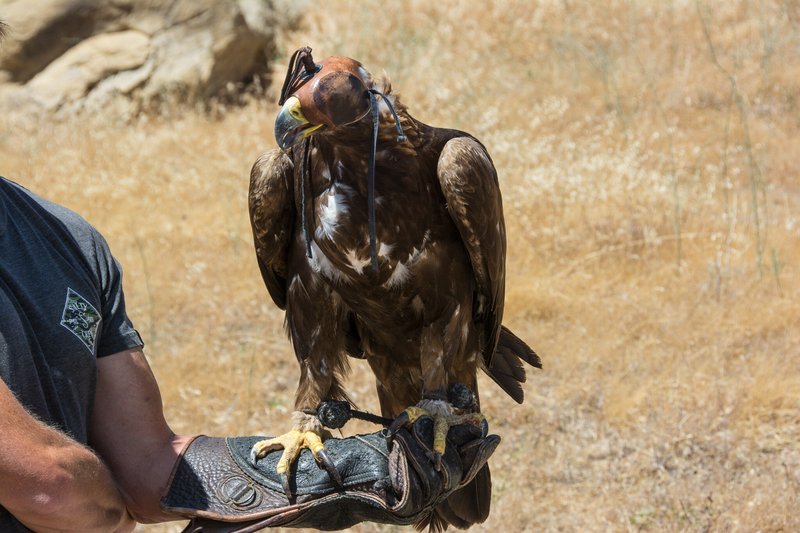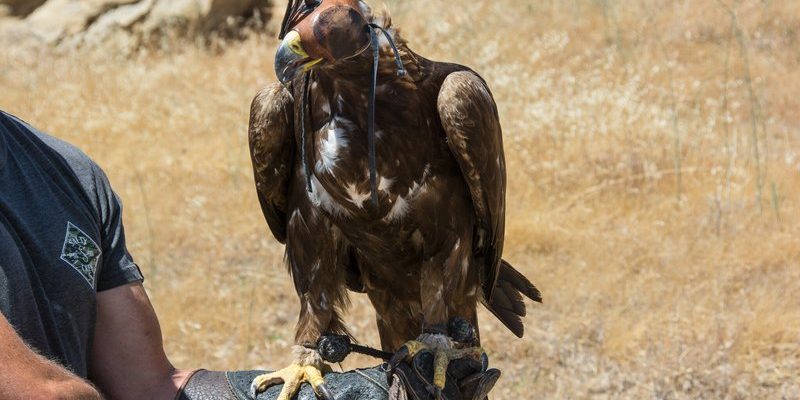
Golden eagles thrive in a range of environments, from mountains to open plains. They are incredible birds of prey, and their diets show just how versatile they can be. From small mammals to larger game, these eagles have a diverse menu. So, what exactly do they eat, and how do they catch their meals? As we explore this topic, we’ll uncover the secrets behind their hunting methods and the adaptations that make them one of the top predators in the avian world.
Diet Overview of the Golden Eagle
The diet of the golden eagle is quite extensive, often depending on its habitat and the availability of food sources. Generally, they are carnivorous, meaning they primarily eat meat. However, their meals can vary significantly depending on where they live. In some areas, you’ll find them snacking on small mammals like rabbits and squirrels, while in other regions, they might go for larger prey such as deer or even livestock.
Here’s a closer look at the types of food golden eagles might consume:
- Mammals: Commonly, they hunt rabbits, hares, and rodents.
- Birds: They may prey on smaller birds like grouse or pigeons.
- Reptiles: Occasionally, they’ll feast on snakes or lizards.
- Fish: In coastal areas, some golden eagles also catch fish.
These eagles have strong beaks and sharp talons, perfect for tearing into their prey. The diversity in their diet helps them thrive in various environments, adapting to what’s available. Honestly, it’s a great survival strategy!
Hunting Techniques of Golden Eagles
Golden eagles are not your average hunters. They combine keen eyesight with remarkable speed and agility. They have excellent vision, allowing them to spot prey from incredible heights—sometimes over a mile away. Here’s the thing: they can see ultraviolet light, which helps them spot urine trails left by rodents, making it easier to find their next meal.
Once they spot their target, these eagles employ several hunting techniques:
1. Ambush Hunting
One common strategy golden eagles use is ambush hunting. They often perch in tall trees or on cliffs, waiting patiently for prey to come into view. When the moment is right, they swoop down at breakneck speed, sometimes diving at over 150 miles per hour! It’s like a roller coaster ride for them—quick, thrilling, and effective.
2. Pursuit Hunting
In addition to ambushing, golden eagles also hunt by actively pursuing their prey. Using their powerful wings, they can fly low to the ground and chase animals through rough terrain. This method requires a lot of energy, but it can pay off when they catch faster animals that might escape from ambush.
Foraging Behavior
While hunting is an impressive feat, golden eagles also engage in foraging behaviors. Foraging refers to searching for food, often when they aren’t actively hunting. They might scavenge from carcasses or search for smaller animals they can catch with less effort.
Eagles are opportunistic eaters, which means they’ll take advantage of whatever food is available. If they come across a dead animal, they won’t hesitate to feast on it. For instance, if a deer falls victim to predation or accidents, a golden eagle may show up for a quick meal.
Seasonal Changes in Diet
Just like people change their eating habits depending on the season, golden eagles do the same. In winter, their diet may shift more towards larger mammals, as smaller animals become scarce due to snow cover. They’re adaptable, adjusting their hunting tactics and food sources based on what’s available.
During the warmer months, these eagles might feast on a variety of small mammals, birds, and insects. The abundance of food during spring and summer allows them to raise their young more effectively. Young golden eagles rely on their parents to bring back a steady supply of food as they grow, building up their skills for future hunting.
Impact of Environment on Diet
The surroundings where golden eagles live play a major role in what they eat. If they thrive in an area with plenty of prey, they’ll maintain a healthy diet. However, if food becomes scarce, they might struggle to find enough to eat.
In areas affected by human activity, such as agriculture, golden eagles often adapt by hunting livestock or scavenging. They’re clever birds that find ways to survive and thrive—even when faced with changes in their environment.
Golden eagles are extraordinary birds with a fascinating diet and impressive hunting skills. Their ability to adapt to different environments and food sources makes them a key part of the ecosystem. By understanding what they eat and how they hunt, we gain insight into their crucial role as top predators.
Observing these magnificent birds in action can truly be a wonder—it’s like witnessing nature’s ballet of survival. So next time you spot a golden eagle or hear about its prowess, you’ll know just what it takes for this incredible bird to thrive in the wild. Remember, every aspect of their lives—from hunting to foraging—reflects the intricate balance of nature.

